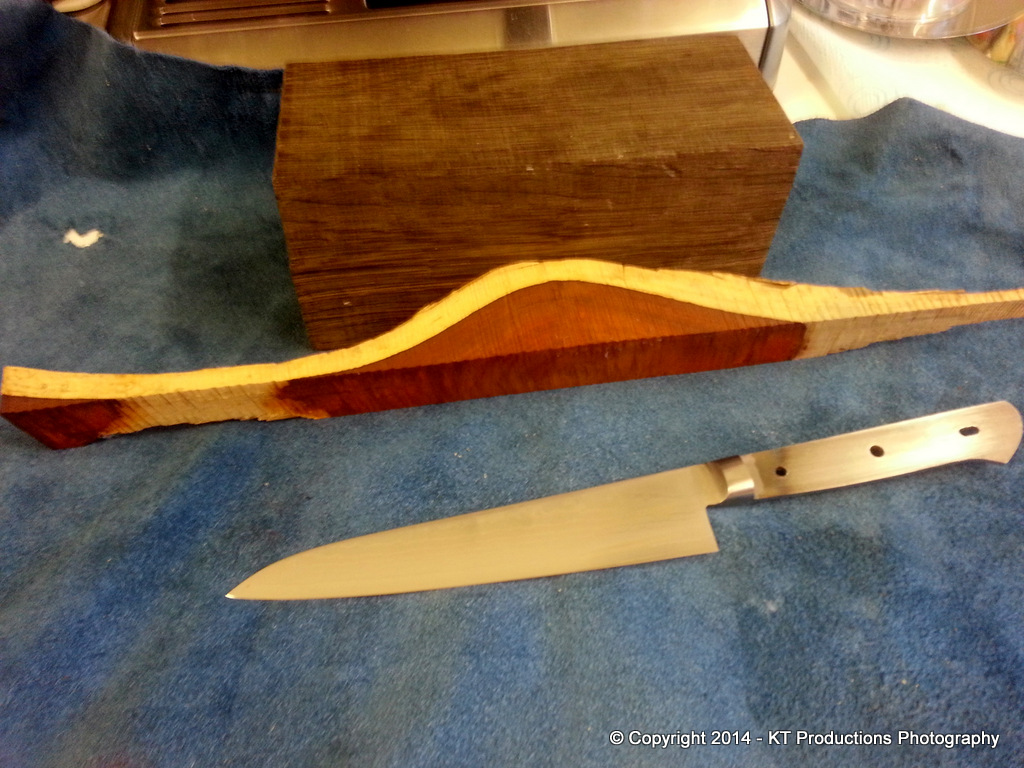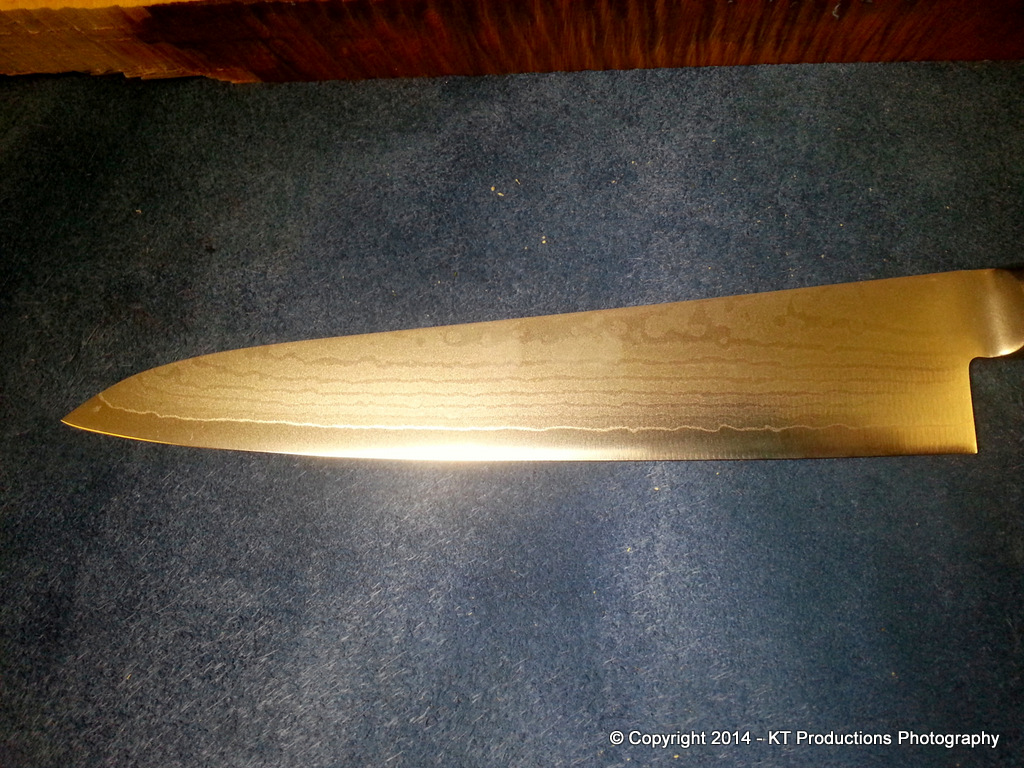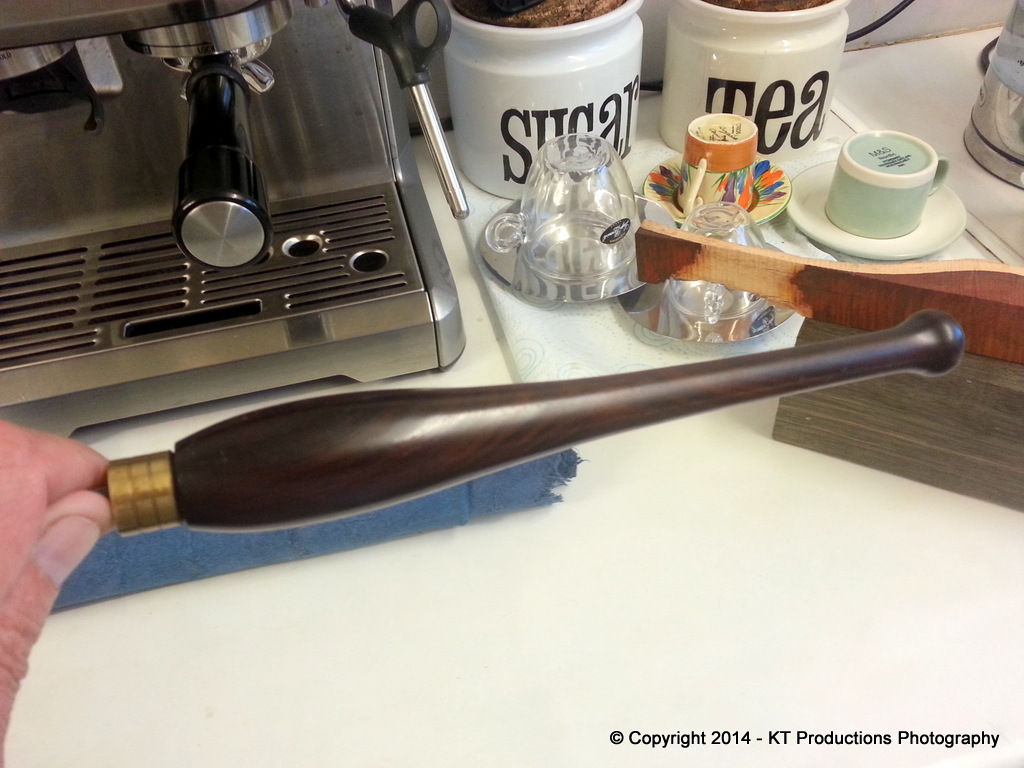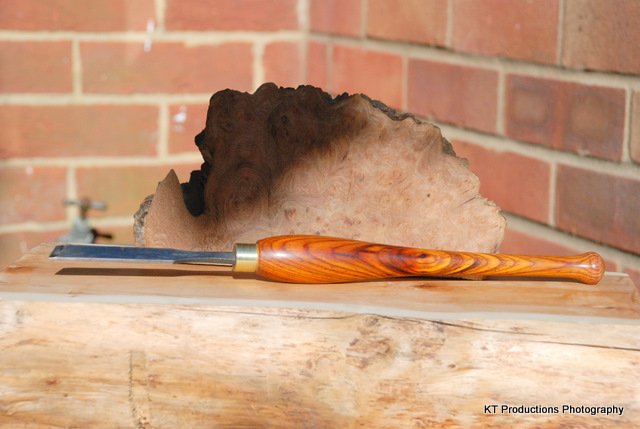jimi43":8a6gv2xy said:
Real Damascus steel is folded and layered with different steel hardness isn't it?
Well … depends on what you mean by 'real' …
The original 'Damascus' steel, from around 800 - 1600, appears to have been a high carbon (~2%) steel, with high quantities of vanadium. This is generally today called 'Wootz'. The texture that was it's trademark arose from the precipitated carbides. It was a crucible steel, and just the fact alone made is superior to other forms of steel at the time - although the presence of the vanadium certainty helped too. In working, it needed a longer soak at temperature to re-dissolve more of the precipitates, before forging. At least: probably - there's a fair bit of uncertaintly, mostly due to the few pieces of 'original' Damascus steel being historically very valuable, and there's a limit to what can be done with non-destructive testing.
It is very likely that the 'serpent in the steel' from the Viking Saga's refers to that sort of material.
Fast forward to today, and what is sold as 'Damascus' steel is usually pattern welded - that's the folding and layering process. Pattern welding like that was, historically, mostly done by the Japanese sword smiths, although they tended _not_ to use different steels, instead using it as a (vary) labour intensive method for refining steels [0].
The different colours in the steel are not very visible inherence (either the older high carbon, or modern pattern welded) - the colours are developed by an acid etch, and it is the different responses of the steels to the etch that give rise to the visible patterns.
Hence, to get strong contrast, you select steels with very different responses to etching. There's some general rules - the higher the carbon, the darker. Nickel as an alloying element is more resistant to acid, so a high nickel steel will remain smother and shinier. Molybenum … etches in a different way the escapes me at the moment.
You also need to consider the end use case - if you want a cutting edge, you need some medium to high carbon steel in there (high for knives, medium for an axe). Hence generally speaking two steels are used, one for the cutting edge, and high carbon, and the other is picked for contrast. Low carbon, high nickel (and normally a touch of chromium) is the 'ideal', but if you wanted a 'proper' cutting edge, at the expense of weaker contrast, there's no reason you couldn't use a high nickel, high carbon steel.
Well, except one reason: £££££££. The only commonly available steel that I can think of that would match that would be 440C. Which is a stainless steel, and that's going to be 'a bit spendy'. Not least because forge welding stainless and non-stainless is not a guaranteed success. And it'll leach chromium during forging, which has it's own issues.
Still, there's no reason that it _has_ to be different carbon levels (which translates to different hardnesses) - they could be matched to given similar hardness and wear, if you can afford to use more 'exotic' [1] materials. That would give a blade with a more even cutting edge, which would somewhat address the point Bugbear made. Not perfectly though - and almost certainly not worth it. I can't see it being any better than an O1 steel blade at best, probably a little worse in general.
I've always wondered what would happen if you tried a 'weathering steel', like cor-ten (contains, among other things, copper) in a pattern weld. Might just fall apart, but I suspect that it would be interesting…
As an aside: the knife pictured above is almost certainly made of stainless steel, right? That's why there's very little contrast in the etched region - stainless steels tend not show much response to an etch, so even though they've used different steels (probably 440 and 440C, if I had to pick some numbers out of nowhere), the etch response is pretty similar.
[0] Western steels of the time were actually of a 'better quality' with less work - Japan's native ores would have been called 'poor quality' (high in sulpher and silicon) in the west, and not used for such demanding applications. Still, it was all they had; hence the labour intensive processing.
[1] Not necessarily that exotic, but less commonly used in blacksmithing.




































